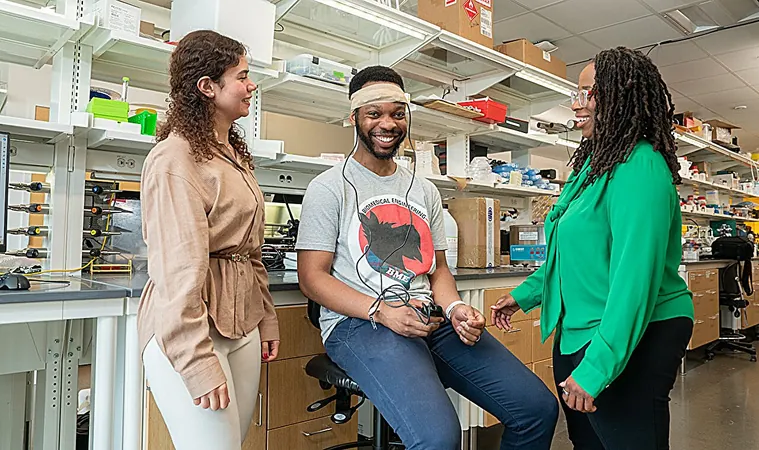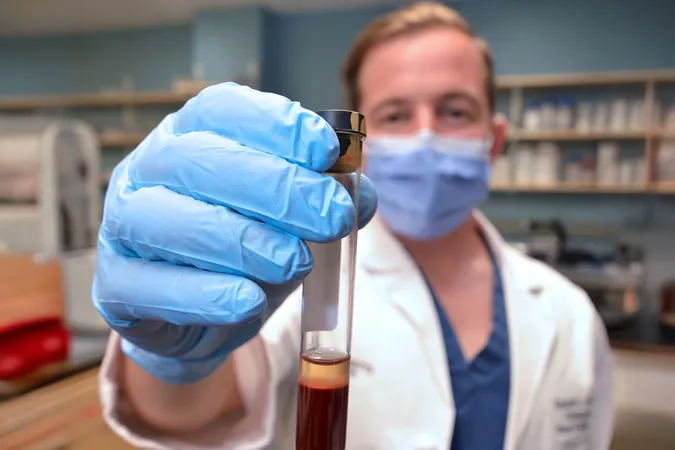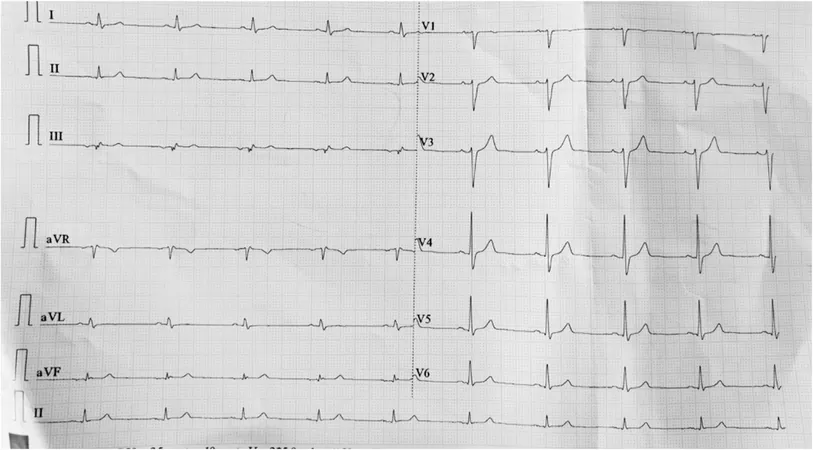
Revolutionary Screening Tool Shows Promise for Sickle Cell Disease Progression
2025-09-15
Author: Nur
A Game-Changer in Sickle Cell Disease Management
In a groundbreaking study, researchers from Carnegie Mellon University and the University of Pittsburgh are unveiling a powerful new use for near-infrared spectroscopy (NIRS), an innovative optical tool traditionally used in various fields. This technology measures changes in hemoglobin concentration and oxygenation, paving the way for more effective monitoring of sickle cell disease in adults.
Understanding the Hidden Dangers of Aging with Sickle Cell Disease
Sickle cell disease dramatically disrupts oxygen flow throughout the body, particularly affecting the brain—a critical area often overlooked in traditional studies. As individuals with this condition age, they face serious complications with small blood vessels in the brain, leading to reduced blood flow and cognitive challenges, including memory loss. This decline can significantly harm their overall quality of life.
Cerebral Autoregulation: A Key Focus for Researchers
Cerebral autoregulation, a vital mechanism that maintains consistent blood flow even as blood pressure fluctuates, emerges as a key marker in identifying small vessel diseases linked to sickle cell. Current assessments primarily involve measuring larger blood vessels through methods like blood pressure cuffs or transcranial Doppler ultrasounds. However, these techniques often fall short, providing unreliable flow measurements without capturing critical oxygenation data.
NIRS: A Promising Alternative for Monitoring Blood and Oxygen Flow
The recent study marks the first time NIRS has been used to track cerebral autoregulation in adults with sickle cell disease. Sossena Wood, an assistant professor of biomedical engineering at Carnegie Mellon, expressed excitement over the findings: "Our study shifts the focus from larger vessels to the smaller ones, revealing what NIRS can detect about blood and oxygen changes in these crucial areas." This approach not only enhances understanding but also introduces a dynamic method of measuring cerebral autoregulation during breathing.
Setting the Stage for Innovative Research
Aligning participants to breathe at the same rate was pivotal in the study, allowing researchers to leverage NIRS alongside advanced mathematical tools to glean insights about blood flow and transit times in microvascular channels—areas that previous methods have not adequately explored.
Global Implications: A Collaborated Effort in Nigeria
The research team's work extends beyond the U.S., collaborating with stakeholders in Nigeria on a clinical trial aimed at improving care for sickle cell patients. Partnering with Lagos University Teaching Hospital and utilizing NIRS, they have observed significant increases in oxygen levels among patients receiving erythropoietin, an economical medication that boosts hemoglobin levels.
A Bright Future for Sickle Cell Disease Patients
Wood sees NIRS as a reliable game-changer that could reshape how this community is treated and monitored. "The adult sickle cell disease population is aging, thanks to therapies that improve longevity. We aim to demonstrate that NIRS can unlock new possibilities in monitoring and managing the complexities of this condition, ultimately enhancing patient outcomes."





 Brasil (PT)
Brasil (PT)
 Canada (EN)
Canada (EN)
 Chile (ES)
Chile (ES)
 Česko (CS)
Česko (CS)
 대한민국 (KO)
대한민국 (KO)
 España (ES)
España (ES)
 France (FR)
France (FR)
 Hong Kong (EN)
Hong Kong (EN)
 Italia (IT)
Italia (IT)
 日本 (JA)
日本 (JA)
 Magyarország (HU)
Magyarország (HU)
 Norge (NO)
Norge (NO)
 Polska (PL)
Polska (PL)
 Schweiz (DE)
Schweiz (DE)
 Singapore (EN)
Singapore (EN)
 Sverige (SV)
Sverige (SV)
 Suomi (FI)
Suomi (FI)
 Türkiye (TR)
Türkiye (TR)
 الإمارات العربية المتحدة (AR)
الإمارات العربية المتحدة (AR)